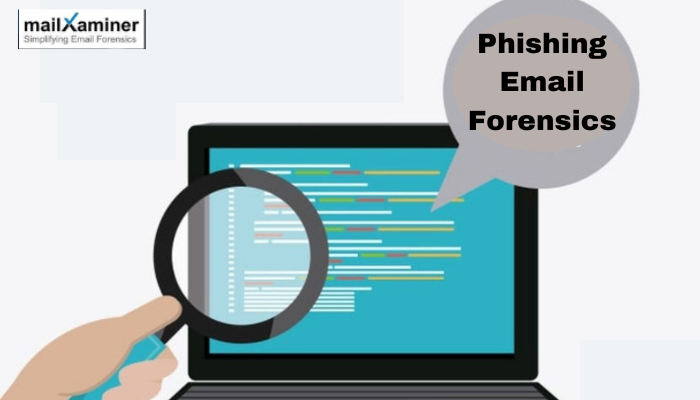What is Phishing Email Forensics? [Solved]
Today with the rise of emerging cyber-attacks, email has become a vital medium for communication, both personally and professionally. However, emails are also becoming the prime target of criminals. These cybercriminals are armed with ever-advancing tactics and now target emails as their primary plan for perpetrating various forms of cyber attack. Moreover, among these threats, phishing email forensics stands at the forefront of malicious activities. Let us first understand what is actually phishing email forensics stands for.
Understanding In-Dept Meaning of Phishing Email Forensics
This type of forensics is the science of investigating suspicious emails to uncover the true intentions of the sender. Moreover, this forensic investigation involves a systematic analysis of email, content, links, and attachments to identify red flags that hint at malicious intent.
Many Phishing emails are easy to spot if you know what to look for. Moreover, by understanding message headers, you can play the role of a detective and validate your suspicions.
Steps For Phishing Email Forensics
It involves a systematic process of investigating and analyzing phishing emails to gather evidence. But you can take your investigation ahead by examining the various email forensic analysis. So, let us outline the essential steps for conducting phishing email forensics.
1. Isolate & Preserve Evidence: Isolating and preserving the evidence during this type of forensics is crucial to ensure the integrity of the investigation and maintain the admissibility of the evidence in legal proceedings if required. Proper evidence preservation enhances the chances of identifying the accused and understanding the attack.
2. Analyze Message Header: If you’re still not sure about the authenticity of emails then, it is time to read about the message which stands at the top-notch while doing phishing email forensics.
An email is a creator at the point of origin and contains all the data every time when email passes through an email server, gateway, or inspection device. Through email header analysis of IP Addresses, routing information can reveal the real sender of these fraudulent communications. Pay attention to the sender’s name very carefully as phishers frequently use this field to imitate reliable organizations or people in an effort to trick recipients.
3. Identifying Malicious Links & Attachments: This is the most crucial and important step while doing email forensics. Consequently, you should learn how to differentiate between legitimate links and cunningly disguised malicious URLs. There are multiple techniques that cybercriminals use to trick users into clicking harmful links or downloading infected attachments.
4. Analyze Attachments: Analyzing attachments is a critical step to uncover potential malware, malicious scripts, or other threat which may insert through email. All the attachments should be properly managed as these play an important role as potential evidence in further legal proceedings.
5. Perform IP address Analysis: In order to learn more about the source of the attack and any possible malicious activities, IP address analysis in phishing email forensics involves looking at the Sender’s IP address and any addresses included in the email.
6. To prepare a report: This is the last and most efficient and effective step. Thoroughly document the full evidence report which should be customized with all the evidence which you have added in the case. This informative report should be clear and based on your analysis.
Advanced Solution For Phishing Email Forensic
Users use searching advanced application MailXaminer which is designed with sophisticated expertise and is the one-stop solution in phishing email forensics.
Additionally, the user of this email investigation program has access to a number of sophisticated search possibilities, which helps to make the procedure very goal-oriented. These search operators are quite simple to use and efficiently deliver the results you’re looking for.
Furthermore, the MailXaminer tool has multiple search methods and features to uncover email’s hidden information. Mentioned below are all the advanced features of the specialized tool.

Key Characteristics of the Mentioned Tool Include:
- Use a single tool to create multiple cases for better management.
- Setup Evidence Files with Required Settings for a Customized Investigation.
- Preview and Examine Email Messages in a Variety of View Modes.
- Six types of searches are available: general, wildcard, fuzzy, regex, stem, and proximity.
- An advanced dashboard to provide a thorough case overview.
- Simple Export and Saving of Email Evidence in 10 Export Formats.
- Email forensic reports can be saved in CSV and PDF formats.
Conclusion
Ultimately, remember that phishing email forensics can be complex and requires expertise in cyber forensics and digital forensics. Additionally, it is essential to perform these activities with the guidance of someone who has expertise in email forensics and also has highly advanced email forensics tool.
If you’re unsure about handling a phishing email, you can contact for seeking assistance from the professionals who will guide you best from their end.

